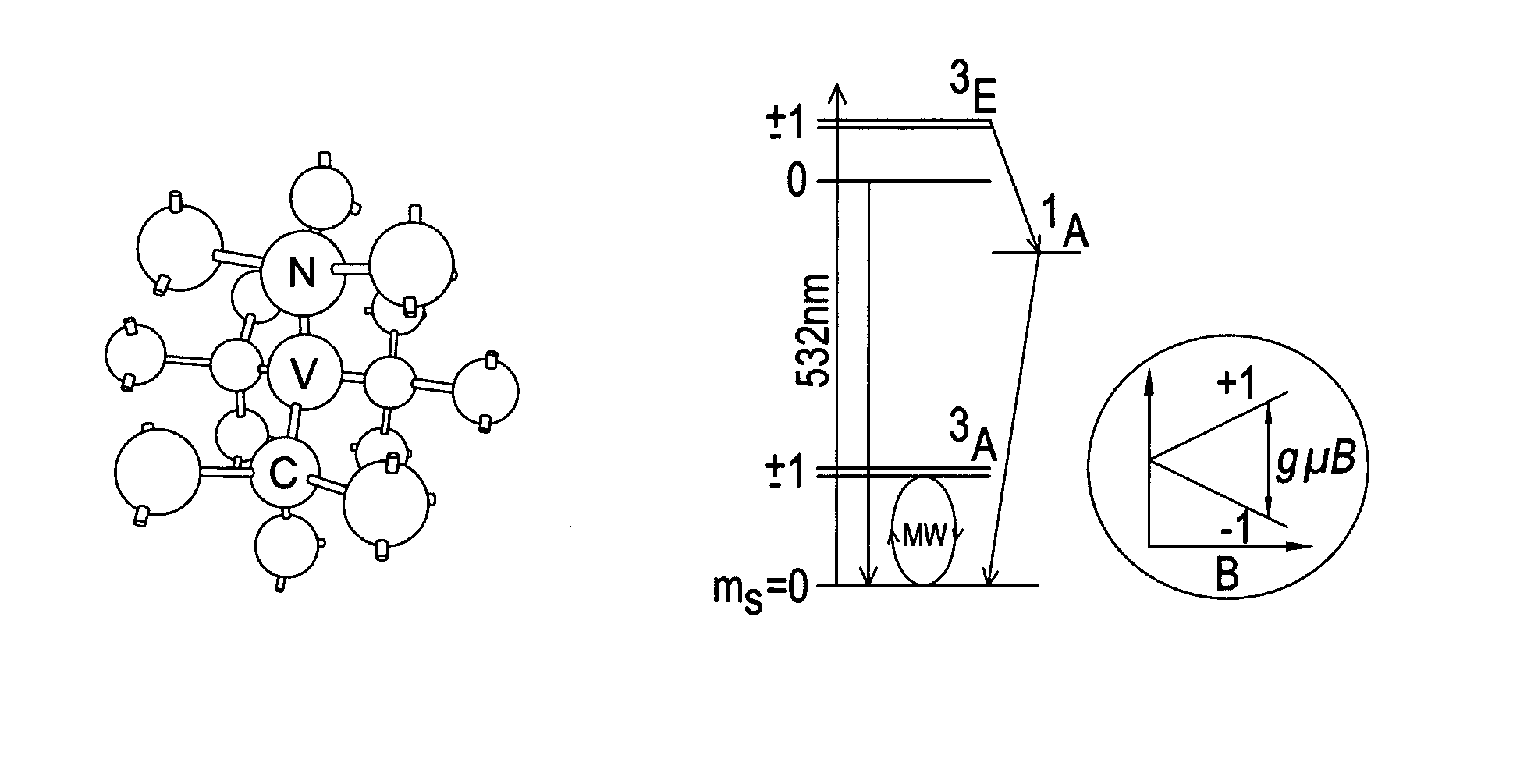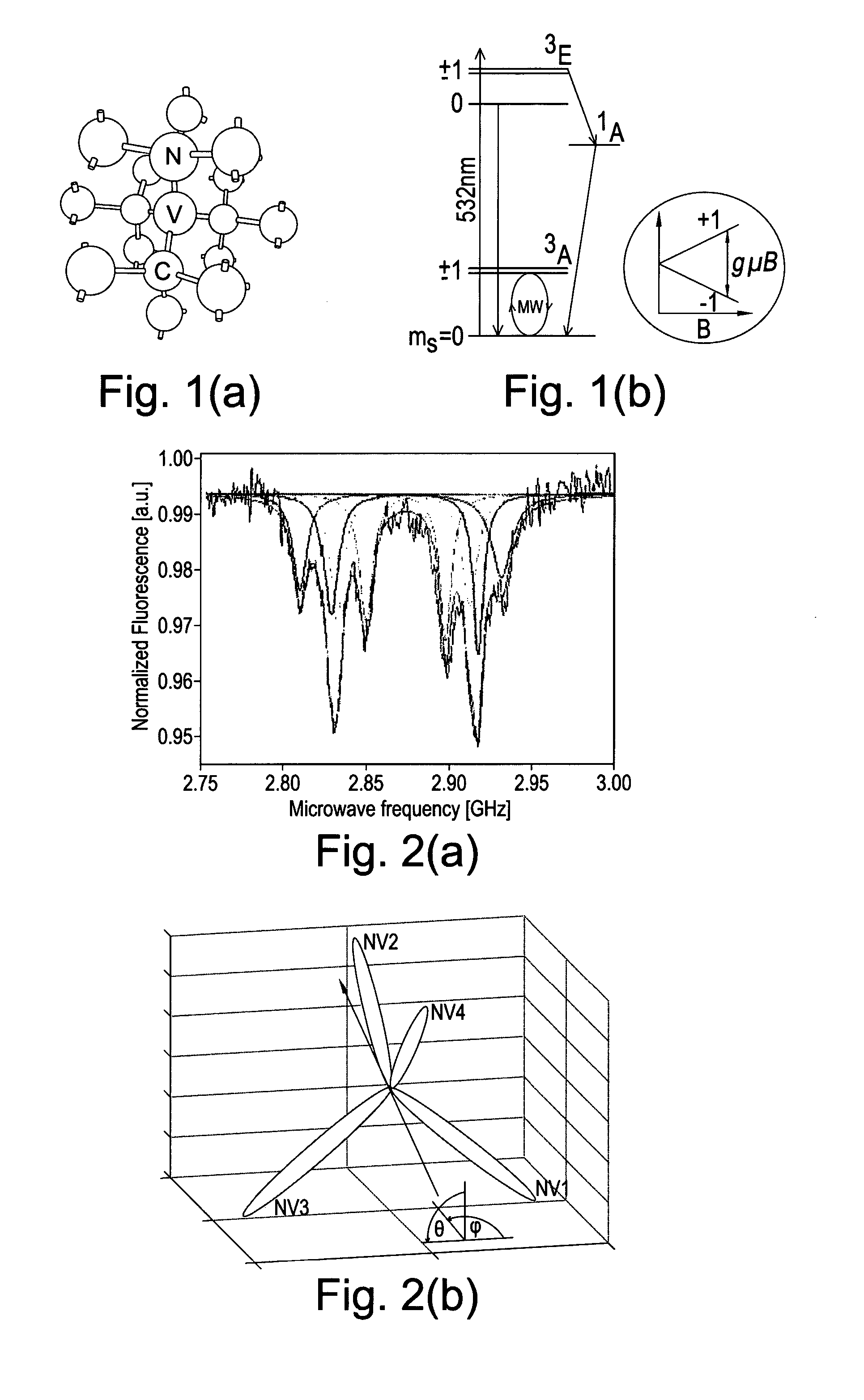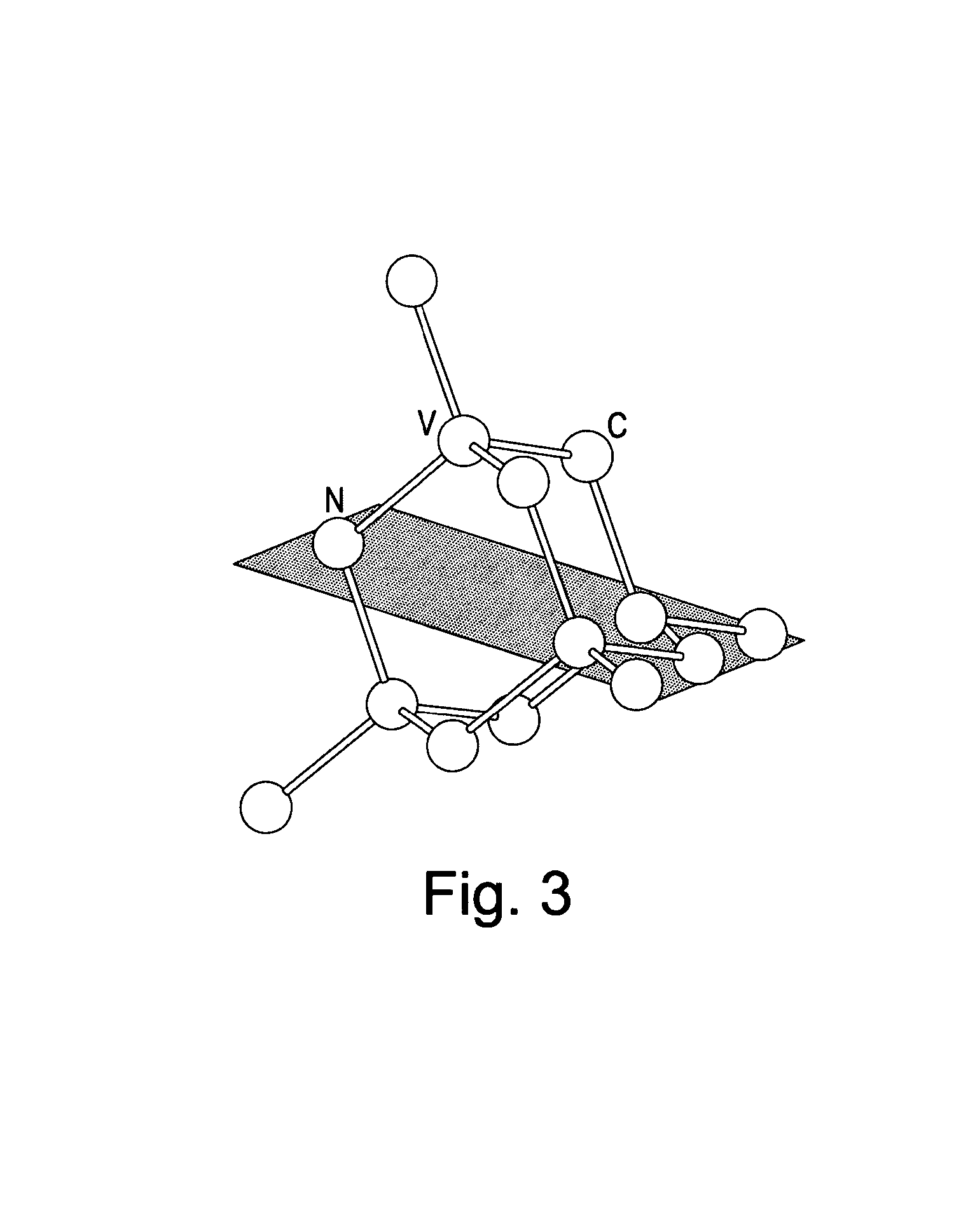Diamond sensors, detectors, and quantum devices
a detector and diamond technology, applied in the field of diamond sensors, detectors and quantum devices, can solve the problems of insufficient counting rate, weak single photon emission of quantum spin defects in such materials, and the inability to meet the requirements of expensive and bulky cryogenic cooling apparatus, etc., to improve the coupling between the light source and the point defect, improve the sensitivity and/or directionality of detection, and improve the effect of outcoupling of light from the point d
- Summary
- Abstract
- Description
- Claims
- Application Information
AI Technical Summary
Benefits of technology
Problems solved by technology
Method used
Image
Examples
example 1
D2d
[0068]In a crystal with Td symmetry there are three possible symmetry related sites (orientations) of a defect with D2d symmetry. If all symmetry related sites are equally probably then the defect is randomly oriented.
[0069]If the probability of finding one particular site is n (where 0≦n≦1) and that for each of the other two (1−n) / 2 then the degree of preferential orientation can vary between completely preferentially oriented (n=1; 100% preferentially aligned), randomly oriented (n=⅓; 0% preferentially aligned) to oriented with equal probability in only two of the three possible symmetry related sites (n=0).
[0070]If the probabilities of occupancy of the three possible symmetry related sites are all different, say n, (1−n−p) / 2 and (1−n+p) / 2 then all possibilities for different distributions amongst the three symmetry related sites are bounded by the lines 0≦n≦1, p≧0 and n+p≦1.
example 2
C3v
[0071]Four directions along which the trigonal axis of a symmetry related site can be oriented: [111], [ 111], [1 11] and [ 11 1] (and their inverses if the defect does not posses inversion symmetry) and labelled a, b, c, d
[0072]Consider growth direction along [001]:
[0073]The symmetry axes of the sites (a), (b), (c) and (d) make equal angles with respect to the growth direction (arccos(√{square root over (⅓)})). No preferential orientation (0% preferential alignment) of trigonal defects is expected for growth along the [001]. The same argument applies for growth along all 100 directions.
[0074]Consider growth direction along [110]:
[0075]The symmetry axes of the sites (a) and (b) make equal angles with respect to the growth direction (arccos(√{square root over (⅔)})). The symmetry axes of the sites (c) and (d) make equal angles with respect to the growth direction (90°).
[0076]Thus sites (a) and (b) can be treated as equivalent and sites (c) and (d) treated as equivalent.
[0077]If t...
synthesis example
[0143]A synthetic type Ib HPHT diamond plate with a pair of approximately parallel major faces within approximately 5° of (001) was selected. The plate was fabricated into a square substrate suitable for homoepitaxial synthesis of single crystal CVD diamond material by a process including the following steps:
i) laser cutting of the substrate to produce a plate with all edges;
[0144]ii) lapping and polishing the major surface upon which growth is to occur, the lapped and polished part having dimensions about 4.0 mm×4.0 mm by 300 μm thick, with all faces {100}. The defect level at or below the substrate surface is minimised by careful preparation of the substrate as disclosed in EP 1 292 726 and EP 1 290 251. It is possible to reveal the defect levels being introduced by this processing by using a revealing plasma etch. It is possible routinely to produce substrates in which the density of defects measurable after a revealing etch is dependent primarily on the material quality and is ...
PUM
| Property | Measurement | Unit |
|---|---|---|
| decoherence time T2 | aaaaa | aaaaa |
| decoherence time T2 | aaaaa | aaaaa |
| decoherence time T2 | aaaaa | aaaaa |
Abstract
Description
Claims
Application Information
 Login to View More
Login to View More - R&D
- Intellectual Property
- Life Sciences
- Materials
- Tech Scout
- Unparalleled Data Quality
- Higher Quality Content
- 60% Fewer Hallucinations
Browse by: Latest US Patents, China's latest patents, Technical Efficacy Thesaurus, Application Domain, Technology Topic, Popular Technical Reports.
© 2025 PatSnap. All rights reserved.Legal|Privacy policy|Modern Slavery Act Transparency Statement|Sitemap|About US| Contact US: help@patsnap.com



